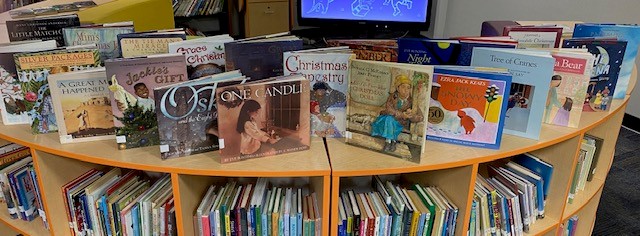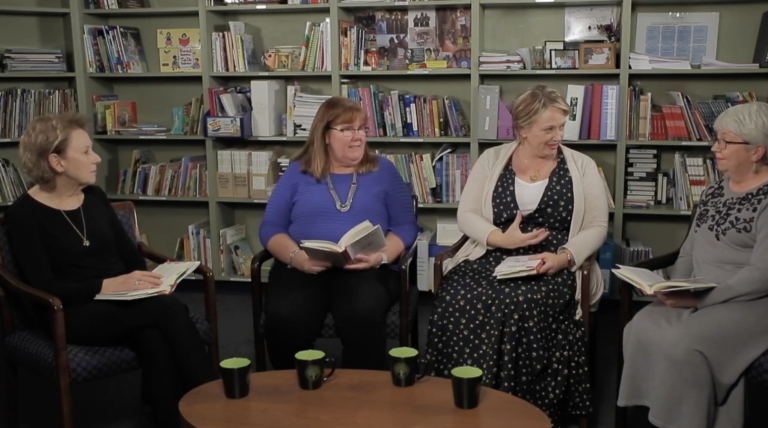Winter is the perfect season to introduce children to the rich diversity of experiences our world offers through learning around the seasonal holidays and festivities around the globe. Children love learning about different cultures and traditions. While our celebrations may look different, children are reassured to learn that there are common values and themes – kindness, giving, and love –that reveal a shared humanity.
Christmas: The festival marking the birth of Christ, celebrated by many Christians on the 25th of December, more generally can mean the extended period including the days immediately before and after the 25th of December, commonly used for festivity and celebration.
Hanukkah/Chanukah: A Jewish festival lasting eight days, Hanukkah celebrates the rededication of the Temple in Jerusalem by the Maccabees. Also known as the Festival of Lights or Feast of Lights, Hanukkah is traditionally marked by the successive kindling of eight lights in a menorah.
Chinese/Lunar New Year: This celebration begins with the first new moon of the lunar calendar and ends on the first full moon of the lunar calendar, 15 days later. Traditionally, New Year’s Eve and New Year’s Day are reserved for family celebrations, including religious ceremonies honoring ancestors. Lunar New Year goes by many names: Chinese New Year or Chunjie, Tết in Vietnamese, Seollal in Korean, Losar in Tibetan, and Spring Festival to name a few.
Kwanzaa: A festival observed by many African Americans from the 26th December to 1st of January, as a celebration of family, community, and culture. The festival is based on the Nguzo Saba, or seven principles: unity (umoja), self-determination (kujichagulia), collective work and responsibility (ujima), cooperative economics (ujamaa), purpose (nia), creativity (kuumba), and faith (imani).
Winter Solstice: There are various culturally based and non-secular celebrations around the time of the winter solstice. The winter solstice, the longest night of the year, falls on December 21 or 22 in the Northern Hemisphere and June 20 or 21 in the Southern.
Don’t be limited by this list! There are so many different ways that people celebrate, check out this blog on winter holidays for more ideas!

In November we shared tips on Thanksgiving Books that Teach Different Perspectives to highlight the holiday while showcasing diversity and creating a culturally responsive experience. This winter, we encourage you to continue this conversation when talking about the holidays and what they mean through multiple lenses. When we share a variety of cultures and traditions and uplift the many different ways to celebrate at this time of year, we may be creating a chance to cultivate curiosity about human differences in an open and accepting way while also including some children in ways they may not have felt included before.
Books and stories are a great way to showcase diversity and create a culturally responsive experience. Here are some suggestions for inclusive stories that highlight winter and the winter holidays:
- December by Eve Bunting *Christmas
- Sam and the Lucky Monkey by Karen Chinn *Chinese New Year
- Grace at Christmas by Mary Hoffman *Christmas
- One Candle by Eve Bunting *Hanukkah
- Too Many Tamales by Gary Soto *Christmas, Hispanic
- The Tie Man’s Miracle: A Chanukah Tale by Steven Schnur *Chanukah
- Kwanzaa by Deborah M. Newton Chocolate *Kwanza
- Annie and the Wild Animals by Jan Brett *Winter, Non-secular
- Hanukkah Moon by Deborah Da Costa *Hanukkah, Latin-Jewish
- The Christmas Coat: Memories of My Sioux Childhood by Virginia Driving Hawk Sneve *Christmas, Native American
- Over and Under the Snow Paperback by Kate Messner *Winter
- Tree of Cranes by Allen Say *Christmas, Japanese American
- Ruby’s Chinese New Year by Vickie Lee *Chinese New Year
- The Legend of the Poinsettia by Tomie dePaola *Christmas, Hispanic
- Together for Kwanzaa by Juwanda G. Ford *Kwanzaa
Vocabulary words you can use to expand children’s vocabulary around this important topic:
Celebrate: to do something special for an important occasion
Tradition: doing something in a certain way year after year, often with family or around a holiday
Festival: a gathering of people celebrating together
As you read the book or tell a story, be sure to use the TALK strategy to engage in meaningful conversations.
T is for Tune In: get into the child’s world and let them know that what they are thinking, or feeling is important.
I was thinking about the story we just read, and I noticed you….
A is for Ask: ask open-ended questions to encourage back and forth conversation.
Why do you think……..?
L is for Lift Language: model the language you want your child to use in the future.
Recognize their answer and expand on what they say by adding rich, complex language using sophisticated words, then answer the question yourself to show a language rich response.
K is for Keep it going: Aim for multiple back and forth exchanges with your child around the story.
Remember to Strive for Five – try to go back-and-forth with your child 5 times. #striveforfive
Use the book as a springboard to have rich, meaningful conversations around ideas of gratitude and thankfulness and sharing what you have with others.
FREE Access to Stories: Check the links below to access these books from home!
Resource |
Use(s) |
Cost |
| Epic Books | A digital reading website with many high-quality digital versions of picture books. | Free for Teachers, Free 30-day trial for families |
| Overdrive | A website and mobile app created for borrowing e-books. Access with your local library card. | Free |
| Local Library | Many libraries offer both in person and online access to books. | Free |
| YouTube | Read alouds of every book listed above, and many more. | Free |
The Cox Campus is committed to ensuring literacy and justice for all. Through impactful strategies and learning experiences, families, educators, and anyone who works with children can make a difference by bringing the science of reading within reach for each child.




this course is helping me
ithink reading holiday books is great help the child to understanding the meaning of that day that we are celebrating give them a chance to speak about..